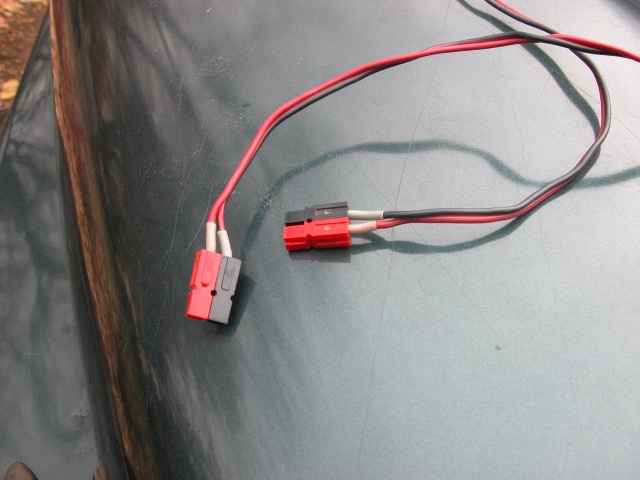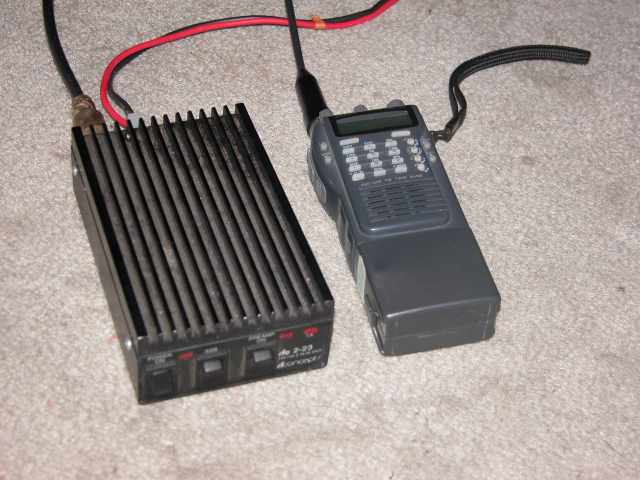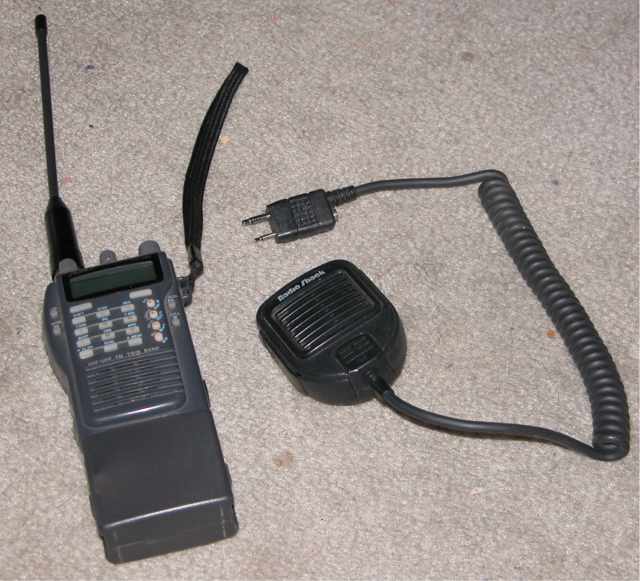
This page contains some general information about amateur radio equipment and then links to three mobile installations I have made. There is a bit of discussion of hand held radios, and my first use of a hand held when mobile.
Here is a link to some information about mobile radios and three mobile installations. I suggest reading this page first, then taking a look at these installations.
One thing I would like to mention at the start has to do with power connectors. Ham radio equipment has done a pretty good job of standardizing on 12 volt power. As your collection of radio equipment increases so does the collection of power connectors. I have standardized on "Anderson Connectors" and now routinely place these on any new radio gear even before I initially apply power for the first time. There are lots of benefits to these connectors - I put them on both radios and equipment that use 12 volts, and also on things like power supplies and chargers that supply 12 volts. Many radio groups such as ARES (Amateur Radio Emergency Services) groups have standardized on Anderson Connectors. This is really nice as then hams can quickly swap radios and power supplies. My source of Anderson Connectors is Wes Allen, K7WWG. His web site is www.dcpwr.com. Another site that gives information on these connectors is http://www.cvrc.net/powerpole.html . I strongly support the use of these connectors. Here is a photo of a cable with these connectors on the hood of my Jeep.

The typical "first radio" for a new ham is a hand held radio, or "HT' (handi-talkie). Here is a photo of three hand held radios giving an ideal of how they vary in size.

The two radios on the left are Alinco DJ-580 radios. They have different size battery packs installed which is why they are different sizes. These are dual band radios, meaning that they will listen on two bands at the same time. These radios work on the 2 meter and 70 centimeter bands (VHF and UHF). The radio on the right is an Yaesu VX-5. Instead of NiCad battery technology the Yeasu uses a Lithium-Ion battery which is quite small, taking up a small bit of space at the back of the radio. Other advances in technology have made this radio quite small. The Yaesu radio claims to be a "triple band" radio. True enough, it will transmit on 2 meters, 70 cm, and 6 meters. But it will monitor only one frequency at a time. It does allow scanning, so you can scan multiple frequencies and come close to what a true "dual band" radio will do.
Like most new hams, my first radio was a 2 meter hand held radio. I wanted to operate mobile, but did not immediately want to buy a mobile 2 meter radio. There are some challenges to using an HT in the car. The big challenge is that the standard HT antenna (called a "rubber duck") is not a great antenna and is really at a disadvantage when placed inside a car. Another problem is that the audio output is rather low. I did not want to drill holes in my car so I installed a glass mount antenna. This won't work as well as a "hard wired" antenna, but it is better than using the HT antenna in the car. To get a bit more power than the radio would produce on its own I used an external amplifier. The owe shown below is a simple "2 in, 30 out" amplifier. You set the HT on low power and this amplifier increases the power.

To get a bit better audio, and give me a microphone that I can hold in my hand I added a speaker-mic to this equipment collection. This is just a small microphone and speaker combination that will connect to the hand held radio. You can clip this to the seat not too far from your head and hear the radio reasonably well and use this as the microphone when you want to talk. Here is a photo:

So now when I wanted to go mobile I would just jump in my car, connect the external power to my HT. Remove the HT antenna and connect to the cable to the amplifier, and then plug in the speaker-mic. This is no substitute for a good mobile radio, but it seemed like a reasonable first step at the time. Now I have three vehicles and all have permanent dual band radios. Far more convenient.....
Link to mobile radio information and examples of 3 mobile radio installations.
Back to amateur radio index page.
Back to Arch Cape web home page.